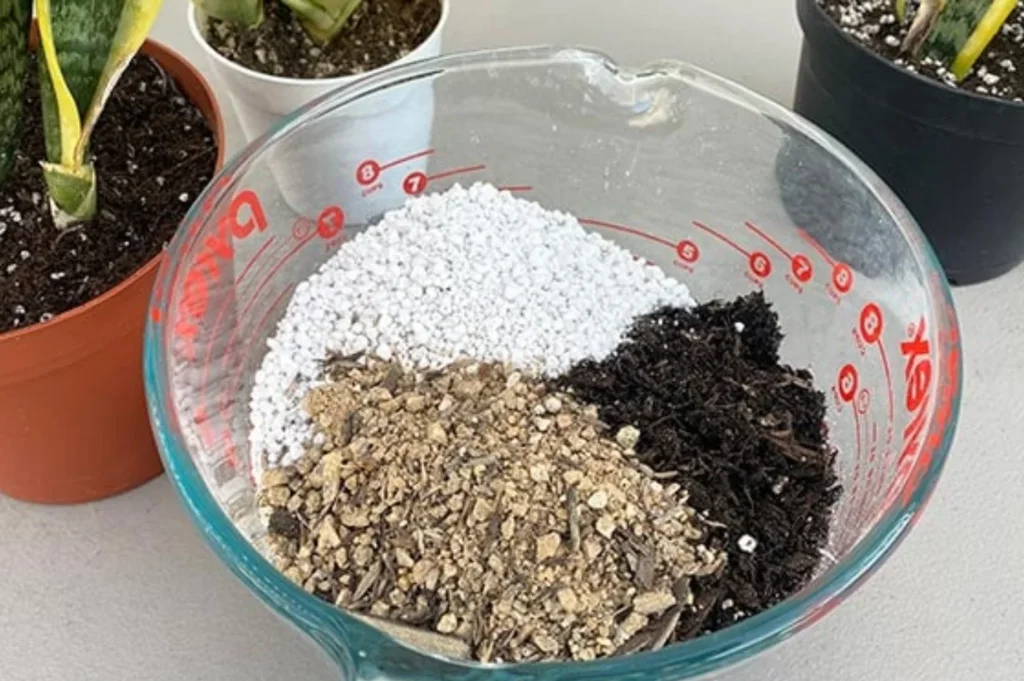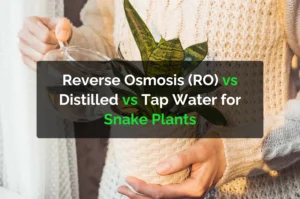If you want your snake plant to grow strong and healthy, the first thing you need to get right is the soil mix. Snake plants are hardy, but they don’t like soggy roots. A well-draining soil mix is key to helping your snake plant thrive. In this article, we’ll share the top 7 soil mixes for snake plants that promote root health, prevent rot, and help the plant grow faster.
Let’s dig in!
Why Soil Mix Matters for Snake Plants
Snake plants, also known as Sansevieria, are succulents that grow best in loose, well-draining soil. If the soil retains too much water, the roots can rot. That’s why using the right soil mix is so important.
Key features of good soil for snake plants:
- Drains quickly
- Doesn’t stay soggy
- Has some nutrients
- It is loose and airy
1. Cactus and Succulent Mix
A ready-made cactus and succulent soil mix is one of the best options for snake plants. It drains well and contains sand and perlite, which prevent waterlogging.
Pros:
- Easily available
- Ideal for beginners
- Well-draining and light
Tip: Add extra perlite for even better drainage.
2. DIY Snake Plant Soil Mix (Perlite + Peat Moss + Sand)
Want to make your soil mix? Try this simple DIY recipe:
- 1 part perlite
- 1 part peat moss or coco coir
- 1 part coarse sand
This mix balances moisture and airflow well, giving your snake plant exactly what it needs.
3. Potting Soil with Perlite and Sand
Regular potting soil is too dense on its own. But when you mix it with perlite and coarse sand, it becomes great for snake plants.
Mix ratio:
- 2 parts potting soil
- 1 part perlite
- 1 part sand
Why it works: It keeps the soil light and airy while providing organic nutrients.
4. Coco Coir-Based Mix
Coco coir is a natural, eco-friendly alternative to peat moss. It helps hold just the right amount of moisture and improves soil texture.
Combine:
- Coco coir
- Perlite
- Sand or pumice
Benefits:
- Sustainable
- Great moisture control
- Lightweight
5. Commercial Snake Plant Soil
Some brands now offer soil mixes made specifically for snake plants. These ready-to-use blends are well-draining and usually include ingredients like perlite, sand, and bark.
Advantages:
- No mixing needed
- Tailored for Sansevieria
- Contains nutrients
Tip: Check the label to make sure it’s fast-draining and doesn’t have moisture-retaining materials like clay.
6. Leca Balls + Soil Mix
Leca (Lightweight Expanded Clay Aggregate) is a modern twist for indoor plant lovers. It improves drainage and reduces root rot.
How to use:
- Add a layer of LECA at the bottom of your pot
- Then add your regular snake plant soil mix on top
Benefits:
- Prevents soggy roots
- Boosts air circulation
- Decorative and functional
7. Pumice-Based Soil Mix
Pumice is another great soil amendment like perlite. It doesn’t float to the top like perlite and holds nutrients better.
Mix:
- Potting soil
- Pumice
- Coco coir or peat moss
This is an ideal mix for those in humid areas where the soil takes longer to dry.
Tips for Choosing the Right Soil Mix
- Drainage is key: Always test the mix before planting.
- Avoid moisture-retaining ingredients: Like clay or vermiculite.
- Repot every 1–2 years: Fresh soil means better growth.
Conclusion
Using the right soil mix for your snake plant can make a big difference in its health and appearance. Whether you choose a store-bought mix or make your own, the key is good drainage and a light, airy texture. Try one of the top 7 soil mixes listed above and watch your snake plant thrive!
With the proper soil, you’ll enjoy strong, vibrant leaves and a plant that’s easier to care for all year round.






